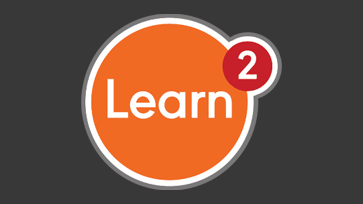Customizing Leadership Programs with Instructional Design
Customizing Leadership Programs with Instructional Design Effective leadership doesn’t happen by chance. Organizations need customized programs that speak directly to the needs of their teams and goals. Cookie-cutter solutions rarely create lasting change, especially in today’s dynamic work environment. By incorporating solid instructional design into leadership training, companies can foster strong, adaptable leaders while meeting their specific objectives. What Makes Customized Leadership Programs So Effective? Leadership programs tailored to your team offer more than general knowledge. They reflect the unique challenges, culture, and values within your organization. Participants interact with content that directly applies to their roles and responsibilities. This relevance encourages engagement and builds confidence as learners practice real-world skills. Customization starts with carefully assessing your employees’ learning needs. Consider their strengths, the gaps in existing skills, and areas for improvement. Do your managers need better decision-making tools? Do team leads struggle to communicate effectively? Pinpointing these areas helps instructional designers create content that connects. The Role of Instructional Design in Leadership Training Instructional design takes educational experiences to the next level. It involves planning, developing, and implementing training materials with specific learners in mind. A strong design framework ensures maximum impact and retention. Visual aids, activities, and storytelling work together to reinforce concepts. A designer doesn’t just provide information. They craft experiences. Leadership training that uses scenarios or role-playing, for example, allows participants to dive into realistic situations. This immersive approach builds muscle memory for moments when leaders face challenges. Steps to Create Customized Leadership Programs Building a program that works for your team involves key steps. By following a purposeful structure, you ensure no element gets overlooked. 1. Assess and Analyze Start by gathering information about your team. Conduct interviews, surveys, or focus groups to understand what gaps exist. Use this information to establish clear objectives for your program. For example, if your team needs help with communication, create a targeted effort to improve this area. Consider building soft skills through interactive learning experiences designed for effective communication. 2. Design Content With Intention Use your objectives as a blueprint. Choose topics, activities, and materials aligned with those objectives. Avoid overwhelming learners with too much content at once. Instead, break it into bite-sized pieces. Blended approaches, such as combining online modules with in-person workshops, often deliver great results. 3. Focus on Engagement Every training activity must inspire participation. Add practical exercises, group discussions, and reflective moments for variety. Leadership programs thrive on collaboration, so encourage open dialogue among participants. This fosters connection while driving home key lessons. 4. Evaluate and Adapt After the program launches, follow up to measure its success. Did the team apply new skills? Did leaders feel more prepared for challenges? Gather feedback from participants to identify improvements for the future. Continuous adjustment ensures the program evolves with your team’s changing needs. Examples of Instructional Design Techniques in Leadership Training Great instructional design brings leadership training to life. Imagine using storytelling to teach problem-solving. Share real workplace scenarios where leaders managed conflict, solved problems, or inspired innovation. These examples provide relatable lessons participants can apply to their own roles. Interactive simulations take lessons even further. Participants face choices, consequences, and opportunities to learn without risks. For instance, a time-management exercise where leaders prioritize tasks under pressure mirrors real-world challenges. Each decision sharpens their ability to stay focused and make impactful choices. Why Communication Training Strengthens Leadership Strong leaders communicate with clarity and purpose. Without these skills, even the best strategies face roadblocks. Including communication skills in leadership programs creates stronger teams and more effective decision-making. Leaders build trust, foster collaboration, and inspire action when they communicate naturally. Encourage participants to practice active listening. Teach them to evaluate tone, body language, and the intent behind words. Connecting through clear communication reduces misunderstandings, boosts morale, and keeps projects on track. Equip your leaders with tools to communicate authentically and adaptively. Partner with Experts to Build the Best Programs Creating a customized leadership program takes time, insight, and experience. Many organizations find success by partnering with training experts. Outside specialists bring new perspectives and expertise in instructional design. They collaborate with your team to build impactful learning experiences that align with your goals. If your organization seeks to improve communication and leadership skills, look no further. Learn2 offers immersive programs that transform teams. Explore their Communicate Naturally program and empower your leaders to grow. Empower Your Leaders to Succeed Leadership programs, when tailored to an organization’s needs, inspire extraordinary results. The right mix of instructional design and targeted content turns current leaders into transformative agents for change. Invest in training that resonates with participants and sparks lasting growth. Ready to build better teams through enhanced communication? Start with Learn2’s Communicate Naturally program. Discover how effective communication drives leadership success.

